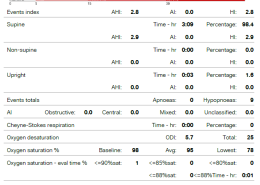My RBC count is 5.11 in my CP blood test report. what is this and why its mark as red. is it dangerous sign. ?
It’s a very common concern—many patients feel the same way when they hear they may need to start blood pressure medication. And just to reassure you, we don’t keep people on medication for no reason. Blood pressure medication isn’t something you take forever by default. It’s prescribed to manage a cRead more
It’s a very common concern—many patients feel the same way when they hear they may need to start blood pressure medication. And just to reassure you, we don’t keep people on medication for no reason.
Blood pressure medication isn’t something you take forever by default. It’s prescribed to manage a condition. If the root cause of your high blood pressure is addressed—like through diet, weight management, or regular exercise—there is a chance the medication can be reduced or even stopped. But this needs to be done properly. Stopping too early, before things are well controlled, can increase the risk of stroke, heart disease, or kidney problems.
There are many types of blood pressure medications, and they’re not all the same. If you’re experiencing side effects, it’s important to bring it up—there are often alternatives that can be better suited.
Home monitoring is also very helpful, especially when first starting medication or adjusting doses. Some people experience white coat hypertension, where blood pressure readings are higher in the clinic than at home—so home readings give a more accurate picture.
Also, just because your BP reading looks fine for a day doesn’t mean the issue has resolved. The medication could be what’s keeping it controlled. Skipping or stopping it on your own could cause your blood pressure to spike unexpectedly.
And it’s totally understandable to be concerned about long-term effects on the kidneys or liver. That’s why regular follow-ups are important—your healthcare provider will know which blood tests to run and what to keep an eye on based on the medication you’re on.
If you have concerns, do bring them up at your next visit. It’s always worth having that conversation so expectations can be properly managed.
Regards,
Dr Say.
Reference:
Clinical Practice Guidelines – Management of Hypertension, 5th Edition (2018), Ministry of Health Malaysia.



Hello, this is something a lot of people ask when reviewing their blood test results. Firstly, let me explain what RBC count is. Your RBC count refers to the number of red blood cells in a given volume of blood, typically in one microliter (µL). These cells are responsible for carrying oxygen througRead more
Hello, this is something a lot of people ask when reviewing their blood test results.
Firstly, let me explain what RBC count is. Your RBC count refers to the number of red blood cells in a given volume of blood, typically in one microliter (µL). These cells are responsible for carrying oxygen throughout the body, so they’re quite essential for your overall health.
For context, the normal range is usually around 4.7-6.1 million cells/µL for adult men, and about 4.2 -5.4 million cells/µL for adult women. Your result of 5.11 falls within this range.
However, different labs may use slightly different reference ranges. So even if your result is considered normal, it might still be flagged in red if it sits near the upper or lower end of that lab’s cut-off. It doesn’t always mean something is wrong, but it may be highlighted for closer review.
A higher RBC count can sometimes be linked to things like dehydration, smoking or certain lung conditions. A lower count may point toward anaemia, which can result from iron or vitamin deficiencies, chronic illness, or blood loss.
That said, we usually don’t make conclusions based on one number alone. To get a clearer picture, it’s important to look at it together with other values in your blood test, such as haemoglobin, haematocrit, and MCV, as well as your overall health and any symptoms you might have.
So, if you’re unsure or just want peace of mind, I’d recommend going through the full report with your doctor.
Regards,
Dr Say
See less